Many cities host Thanksgiving Day parades featuring large inflatable balloons. If you check them out the night before, you often can see them being blown up. Back in 2012, Alyssa Coppelman wrote about Frank Hallam Day’s photos that capture these balloons from a different angle. The post is reprinted below.
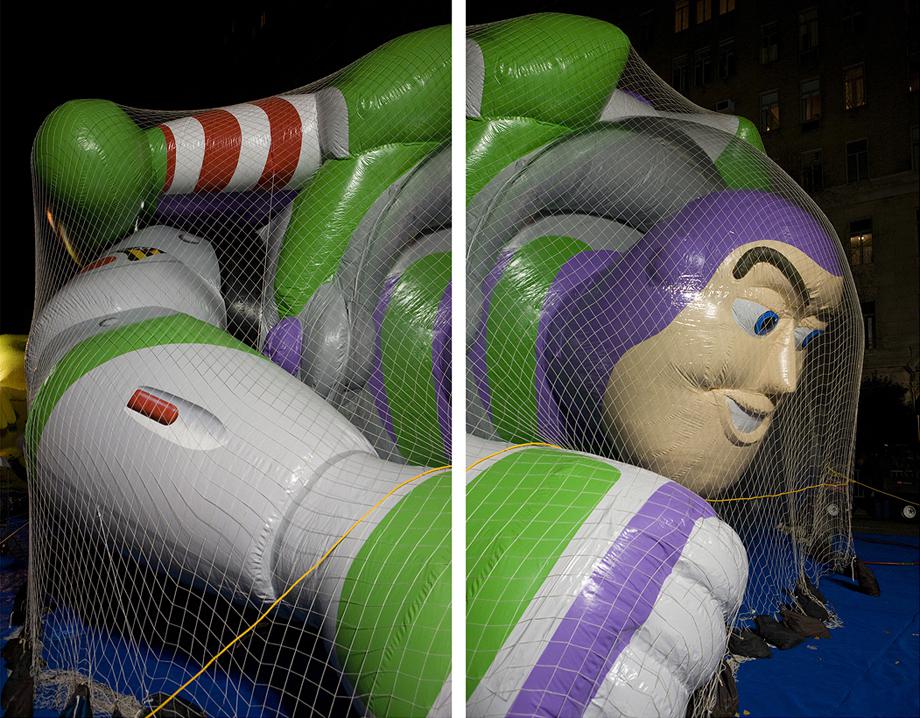
Buzz, diptych.
Frank Hallam Day/Addison/Ripley Fine Art, Washington, D.C.
As America gears up for the world-famous Macy’s Thanksgiving Day Parade, the perspective of photographer Frank Hallam Day offers a darker and more unusual view of those perennially cheerful oversized cartoons. For four years, he captured photographing balloons the night before various parades for a series he calls Blown Up.
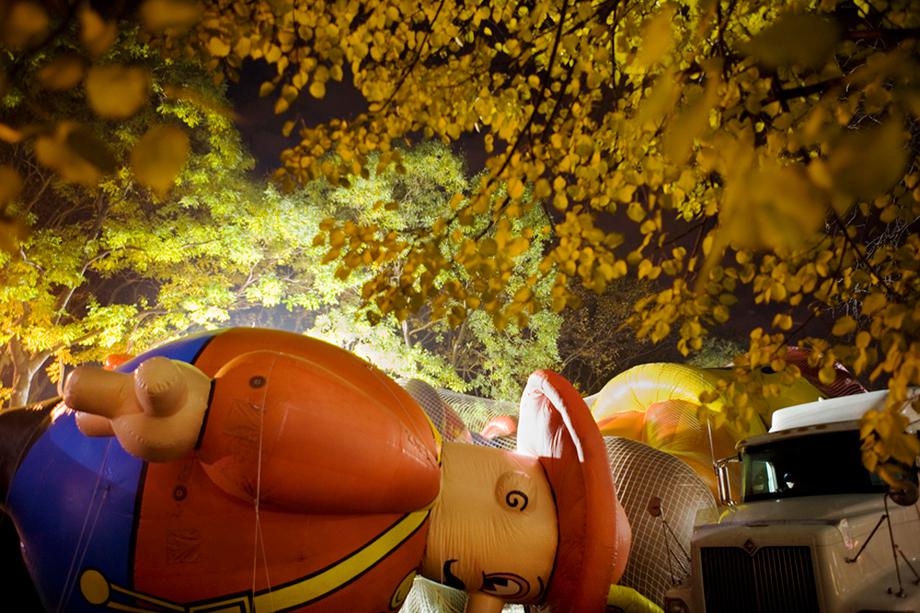
Frank Hallam Day/Addison/Ripley Fine Art, Washington, D.C.
Already inflated with helium and ready to float through city streets, the balloons were by necessity pinned down in nets, giant prey to tiny predators who couldn’t otherwise capture them. The bug-eyed looks on some of their faces evoke captivity, bondage, or even torture.
Via email, Day says, “I’m not really interested in the specifics of what/who the balloons depict. … I like the ambiguity of identity, of scale, of location, and of time. The creepiness comes in, I think, with the multi-stage recontextualization that’s going on here. … we are supposed to recognize the balloons as warm, cheerful characters on screens, as real personae to children. But these gigantic things lying late at night in the street are chillingly corpulent, wrinkly things … neither warm nor cheerful. Horrifying, in need of an oxygen mask and surgery, perhaps. … Maybe they look magical, floating up in the air the next morning; I wouldn’t know … I’m always sleeping in.”
The Macy’s Thanksgiving Day Parade began featuring balloons in 1927, as a replacement for zoo animals, which, up until that time, had been a regular feature of these parades but were removed because they frightened some children. The first balloons included cartoon characters, like Felix the Cat. In 1934, due to the popularity of Disney, Mickey Mouse was debuted as a balloon. It was briefly halted due to lack of resources during World War II. However, parade balloons have become a cultural mainstay for generations—and you may never look at them the same way again.

Frank Hallam Day/Addison/Ripley Fine Art, Washington, D.C.
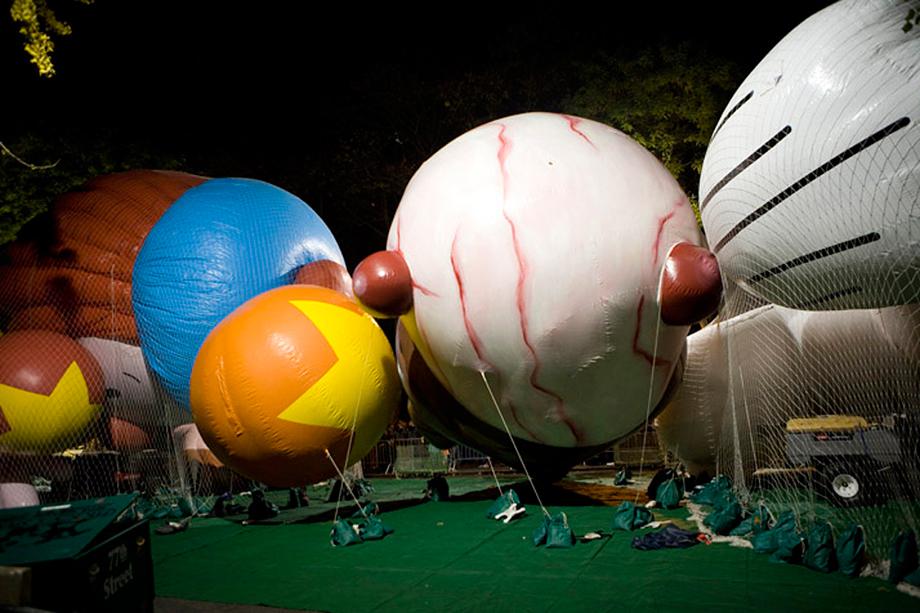
Frank Hallam Day/Addison/Ripley Fine Art, Washington, D.C.
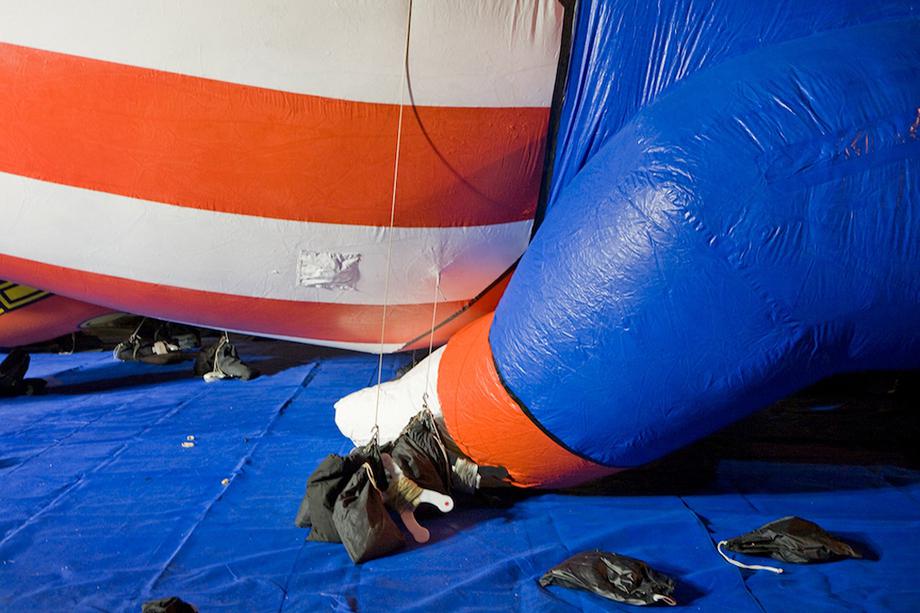
Frank Hallam Day/Addison/Ripley Fine Art, Washington, D.C.
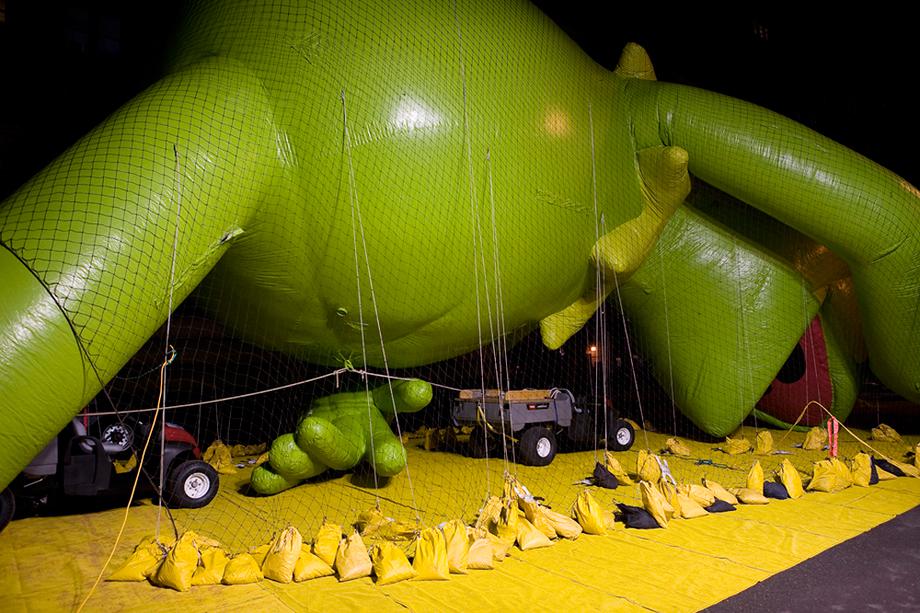
Frank Hallam Day/Addison/Ripley Fine Art, Washington, D.C.

Frank Hallam Day/Addison/Ripley Fine Art, Washington, D.C.
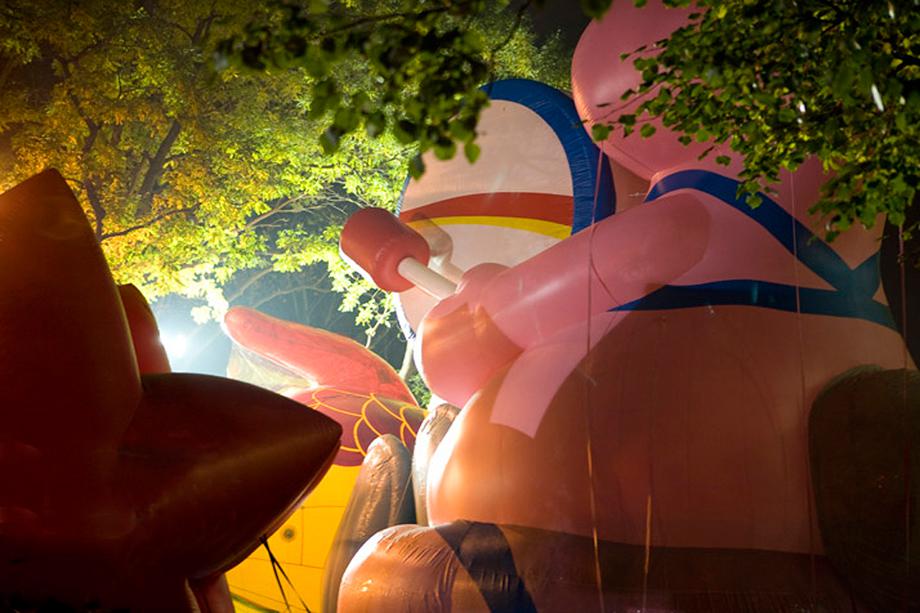
Frank Hallam Day/Addison/Ripley Fine Art, Washington, D.C.
Also see Miriam Krule and Noam Prywes’ article on whether we should be wasting our dwindling supply of helium on floating cartoon characters.